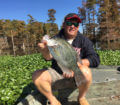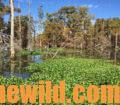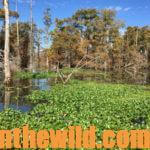 Editor’s Note: Whitey Outlaw from St. Matthews, South Carolina, has been fishing crappie tournaments for the last 40 years. He’s a third-generation crappie fisherman and consistently finishes in the top 15 in most of the tournaments he enters. Whitey’s home lake is Santee Cooper in South Carolina that was impounded from the Congaree River. Like most river systems, whether they’re dammed up or not, the Congaree was supported by a wide variety of creeks – often well away from the main river. Many of these creeks went through cypress and tupelo hardwood forests. So, when the river started backing up, these creeks were flooded and created what Outlaw calls, “The Swamp.” Many of these creeks became oxbow lakes that were cut off from the main river channel when the lake was impounded. The swamps that Outlaw fishes include Broadwater, McGirth’s Lake, Otter Flat and all the swamps attached to the main lake. However, most all rivers anywhere – whether they’re a part of a lake or a free-flowing stream – have creeks coming into them. Many of these creeks will have grass in them and often standing timber, just like they do at Santee Cooper in South Carolina.
Editor’s Note: Whitey Outlaw from St. Matthews, South Carolina, has been fishing crappie tournaments for the last 40 years. He’s a third-generation crappie fisherman and consistently finishes in the top 15 in most of the tournaments he enters. Whitey’s home lake is Santee Cooper in South Carolina that was impounded from the Congaree River. Like most river systems, whether they’re dammed up or not, the Congaree was supported by a wide variety of creeks – often well away from the main river. Many of these creeks went through cypress and tupelo hardwood forests. So, when the river started backing up, these creeks were flooded and created what Outlaw calls, “The Swamp.” Many of these creeks became oxbow lakes that were cut off from the main river channel when the lake was impounded. The swamps that Outlaw fishes include Broadwater, McGirth’s Lake, Otter Flat and all the swamps attached to the main lake. However, most all rivers anywhere – whether they’re a part of a lake or a free-flowing stream – have creeks coming into them. Many of these creeks will have grass in them and often standing timber, just like they do at Santee Cooper in South Carolina. 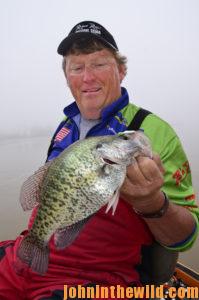
According to Outlaw, “We’ll possibly catch 50–100 crappie in a day. However, the limit that you can keep in South Carolina is 40 crappie per day per angler. So, the crappie we keep usually will be from a 1-1/4 to 2 pounds each, and we’ll release the rest of the crappie that we catch. On an average day, we usually can produce 20-nice crappie per person per day. We don’t try to catch all the crappie we can, because I don’t like to drain my holes. I don’t really like to catch all the crappie I can catch out of one hole. I like to leave while the crappie still are biting and will attract other crappie to the same area as the hole. I enjoy hunting and finding crappie probably as much if not more than I do catching crappie.”
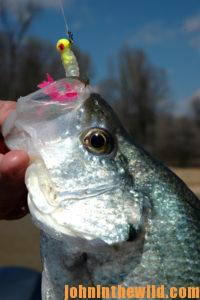 What Are the Differences in Fishing Grass for Crappie by Digging Holes in the Summertime and the Wintertime:
What Are the Differences in Fishing Grass for Crappie by Digging Holes in the Summertime and the Wintertime:
“There’s very little difference in digging holes in the grass and catching crappie during the summer or the winter months,” Outlaw emphasizes. “You’ll usually catch about the same size crappie in the fall, as you will in the early spring. When the water starts to cool off in the fall, the crappie will gorge themselves with food to build-up fat for the winter and to prepare for the spawn in the spring.
“In the cold winter months and the hot summer months, the size and the number of crappie we catch are about the same. But, we do slow-down our fishing. After we dig our holes, we may have to fish the same hole for 3-4 minutes before we can aggravate a crappie into biting. But it seems to me that once you catch a crappie in the summer and winter, that causes the other crappie to get fired-up and start biting.
“In the summertime, the real key is finding the grass beds in the right depth of water where the crappie wants to feed. Whether fishing in the summer or the winter months, I need to have 5–8 foot deep water to catch the crappie. Sometimes I must fish as deep as 12 feet of water in the summer and the winter. In the areas I fish, I catch mostly black crappie, in the upper end of Santee Cooper, which is the most riverine section of the lake. As I move further down the lake, I’ll start to catch more white crappie than I do at the other end of the lake. If you can find the right patches of grass with crappie holding under them, you can catch crappie out of those patches of grass almost all year long. Now if the water gets muddy, the black crappie won’t be as black as they are when the water is clear.”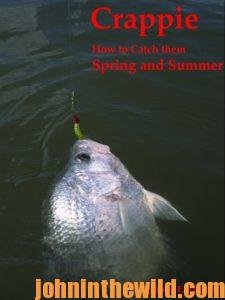
To learn more about crappie fishing, check out John E. Phillips’ book, “Crappie – How to Catch Them Spring and Summer,” available in Kindle, print and Audible versions at http://amzn.to/WGaJLT.
Tomorrow: Why Whitey Outlaw Only Takes Family and Close Friends Crappie Fishing

